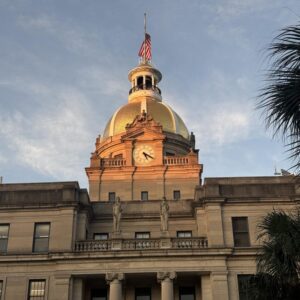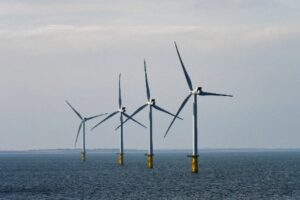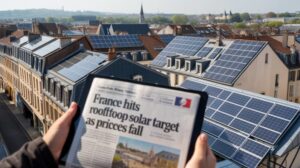‘Construction due to begin’ | Billion-dollar 1GW blue hydrogen project bags planning approval

Construction on the first phase of a billion-dollar 1GW blue hydrogen production plant in the UK is set to begin this year, after the project was given the green light by the local planning authorities yesterday (Tuesday) evening.
Full planning consent for the first 350MW phase of the Stanlow refinery blue hydrogen project, part of the HyNet hydrogen and carbon capture utilisation and storage (CCUS) scheme in north-west England, was unanimously approved by the planning committee at Cheshire West and Chester (CWAC) local authority.
This was granted alongside outline planning approval for the second 700MW phase, which would take the full project capacity to over 1GW.
First H2 from the first phase at the Essar-owned refinery can be expected in 2027, according to project developers Essar Energy Transition (EET), slightly later than the 2026 originally projected.
However, a final investment decision (FID) on the first 350MW phase has not yet been made — this is scheduled for later this year, “depending on government processes,” David Parkin, HyNet’s project director told Hydrogen Insight.
EET has pledged to spend $1bn on the first phase of the plant, which it hopes to ramp up to 4GW by 2030.
Article continues below the advert
The blue hydrogen, made from fossil gas with carbon captured using technology from Johnson Matthey, will be used in the refinery and for delivery to local industrial customers, including Tata Chemicals, Encirc glass bottling plant and Pilkington Glass, all of which have signed heads of terms for a supply.
However the project’s hopes of also supplying heating to the local area were dashed when the UK government cancelled its plans to trial it in nearby Ellesmere Port in the face of furious opposition.
The wider HyNet project comprises the Stanlow blue hydrogen production and carbon capture facilities and Italian oil giant Eni’s carbon transport and subsea sequestration facilities in the Irish Sea, as well as potentially other smaller CCUS providers, who have until March 2024 to apply to join the cluster.
It was one of two projects to be selected for UK government funding in 2021 as part of its Track-1 CCUS cluster, while in October Eni agreed a regulatory framework with the Department of Energy Security and Net Zero to transport and store carbon dioxide as part of the project.
EET was formed in February 2023 by Essar, the India-based refiner that owns the Stanlow refinery. The new company is the parent of Vertex Energy, itself a 50:50 joint venture between Essar and UK-based Progressive Energy, which is leading the development of the HyNet blue hydrogen production facilities at Stanlow.
“We are delighted that HyNet’s low carbon hydrogen production plant has been given the green flag to begin construction,” said Parkin. “The plant will provide locally produced hydrogen to industry across the region, enabling them to switch their fuel to a low carbon alternative.”
But the decision dismayed campaigners, who had spoken out against the project at the planning hearing, warning of the methane emissions associated with fossil gas production.
“On the day the world learned that last year was the hottest on record, we’re hugely dismayed that CWAC has approved this fossil fuel hydrogen scheme which relies on dumping carbon dioxide under the seabed,” a spokesperson for local grassroots campaign group HyNot told Hydrogen Insight. “The numerous objections fell on deaf ears because the planning committee is unwilling or unable to engage with the science and the council’s climate emergency declaration is treated with disdain by its own councillors.”
He added: “CWAC has fallen for the HyNet hype being pushed by the fossil fuel industry which is greenwashing blue hydrogen made from methane as clean and low carbon. CWAC’s shameful decision disregards the public it’s supposed to serve and locks Cheshire into a fossil fuel future. Blue hydrogen isn’t green, HyNet is a white elephant and today is a black day for Cheshire.”






